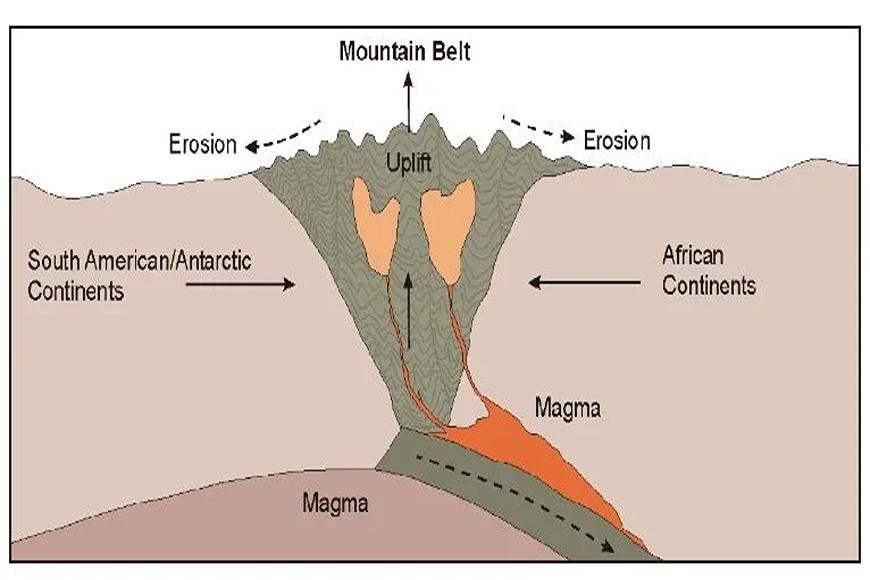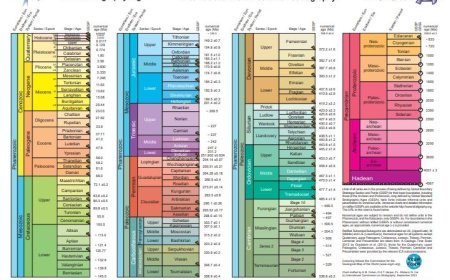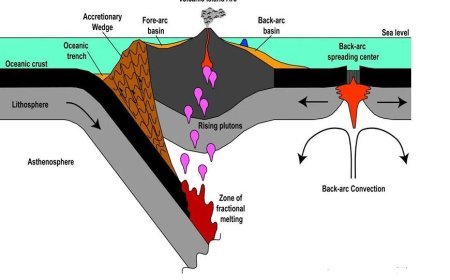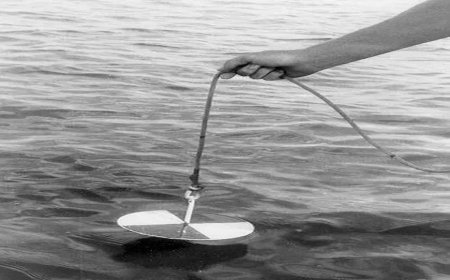OROGENY AND PHYSIOGRAPHY OF OROGENY
Orogeny: Earth's mountain-building process! Convergence of plates creates towering ranges with folded, faulted, and eroded landscapes.

OROGENY
- Orogeny is an occurrence that causes compositional diversification and structural deformation of the lithosphere along the convergent plate borders. It is often referred to as an orogenic belt.
- The evolution of the orogeny occurs when the continental plate crumples and uplifts to build one or more mountain ranges.
- This sequence of geological processes is known as orogenesis. The synergic plate is generated during the process of orogeny.
- Orogeny is the principal method by which mountains are formed on continents. The term orogeny is derived from the Greek words oros (mountain) and genesis (creation).
- Orogeny occurs as a result of tectonic plate convergence. Subduction is one possibility. It is the process by which a continent rides violently over an oceanic plate to produce an accretionary orogeny, or the process by which two or more continents collide to generate a collisional orogeny.
PHYSIOGRAPHY OF OROGENY
- Orogeny Physiography Orogeny, which is the deformation of extended portions of neighboring continental cratons, frequently forms orogenic belts.
- The young orogenic belts, which are characterized by frequent volcanic activity and earthquakes, continue to subduct.
- Older orogenic belts are commonly substantially eroded, resulting in displaced and distorted strata. These are frequently severely metamorphosed and contain huge amounts of intrusive rock known as batholiths.
- Subduction zones go through the crust, thicken the lithosphere, cause earthquakes and volcanoes, and occasionally construct island arcs.
- During an accretionary orogeny, these island arcs might potentially be added to a continental edge.
- The orogeny may culminate in the arrival of continental crust from the other side of subducting oceanic plates to the subduction zone. This completes the subduction process and converts the accretional orogeny into a collisional orogeny.
- The collisional orogeny may result in exceedingly high mountains, as it has done over the last 65 million years in the Himalayas.
- Orogeny processes can take tens of thousands of years to develop mountains from sedimentary basins.
- Orogenic belt activity is frequently exceedingly long-lived.
- Much of the basement under us, for example, is from the Transcontinental Proterozoic Provinces, which accreted to Laurentia over the span of 200 million years during the Paleoproterozoic.
- During this time period, the Yavapai and Mazatzal orogenies were active.
- The same series of orogenies has occurred on the West Coast of North America. It is the location where the Antler orogeny began in the late Devonian.
- The Sevier orogeny and the Sonoma orogeny came after it, and they both culminated with the help of the Laramide orogeny.
- The Laramide orogeny alone lasted around 40 million years, from 75 million to 35 million years ago.
- The topographic height of orogenic mountains is believed to represent the principle of isostasy, or the balance of descending gravity on an upthrust range comprised of sunlight.
- The thick underlying mantle exerts buoyant upward pulls on the continental crust material.
- In orogenic belts, erosion of the layers above it and isostatic adjustment, which can bring layers that are deep underground to the surface, wear away this thick layer of rock.
- The erosional process is known as unroofing, and the ensuing exposure of previously deeply buried strata is known as exhumation.
What's Your Reaction?



































